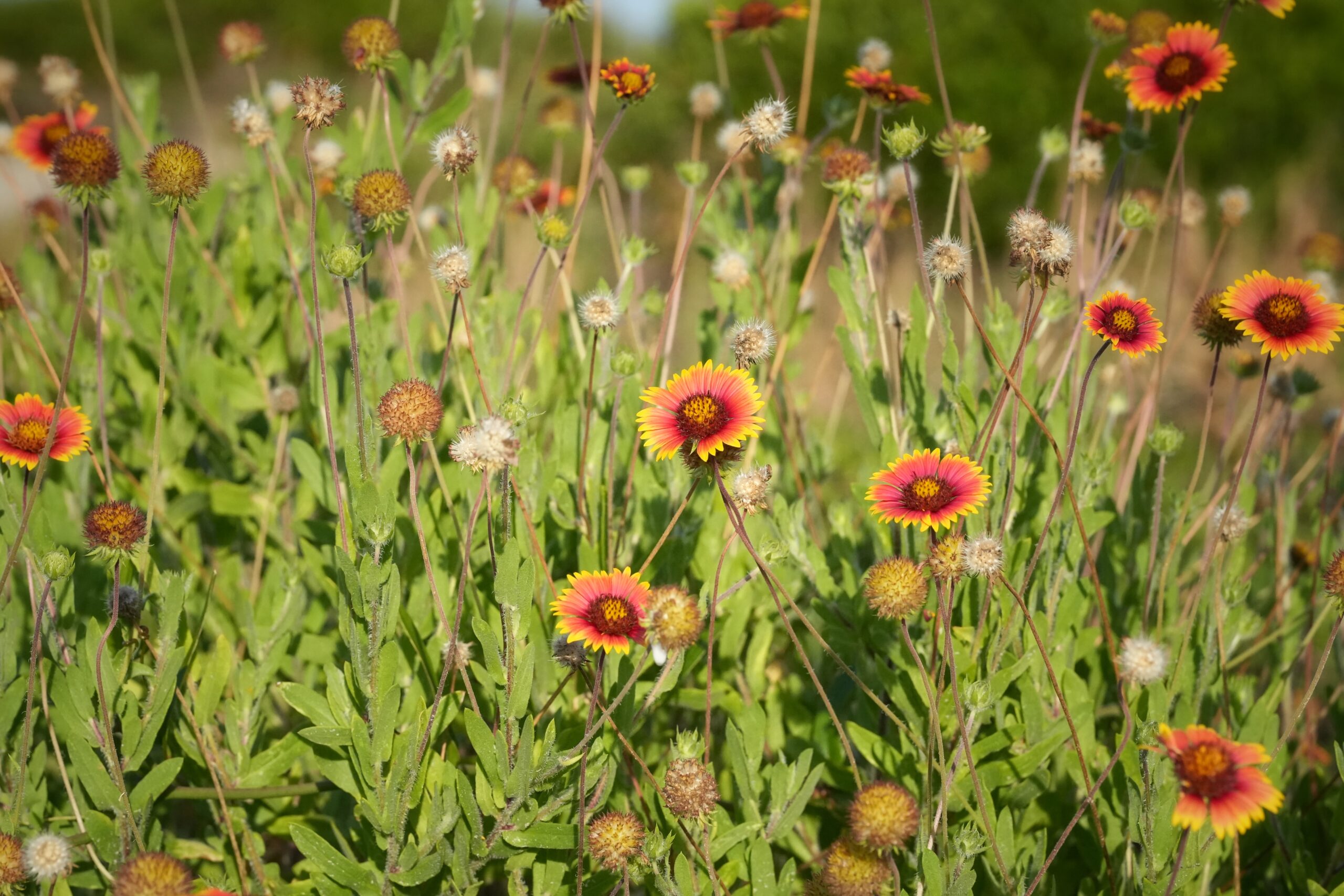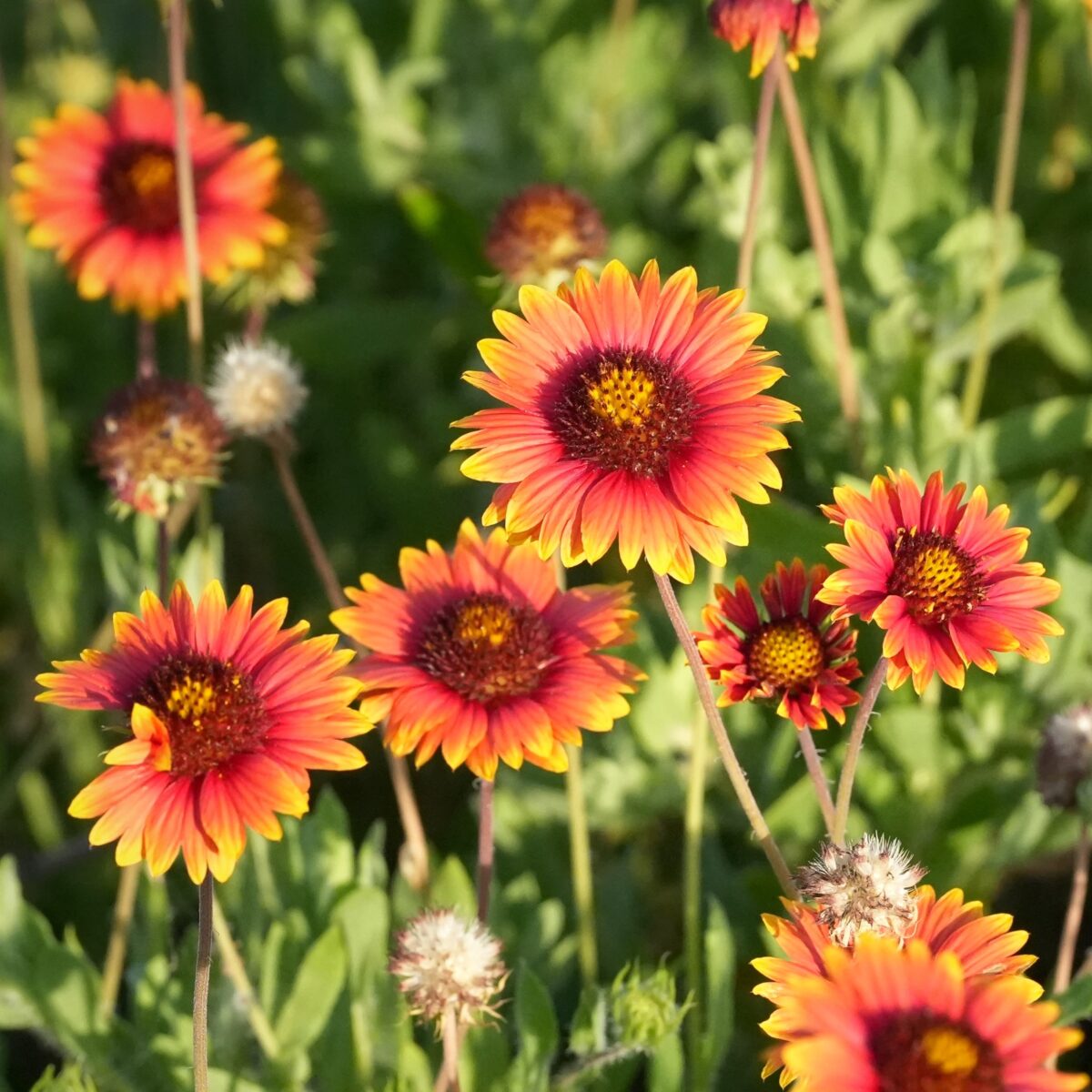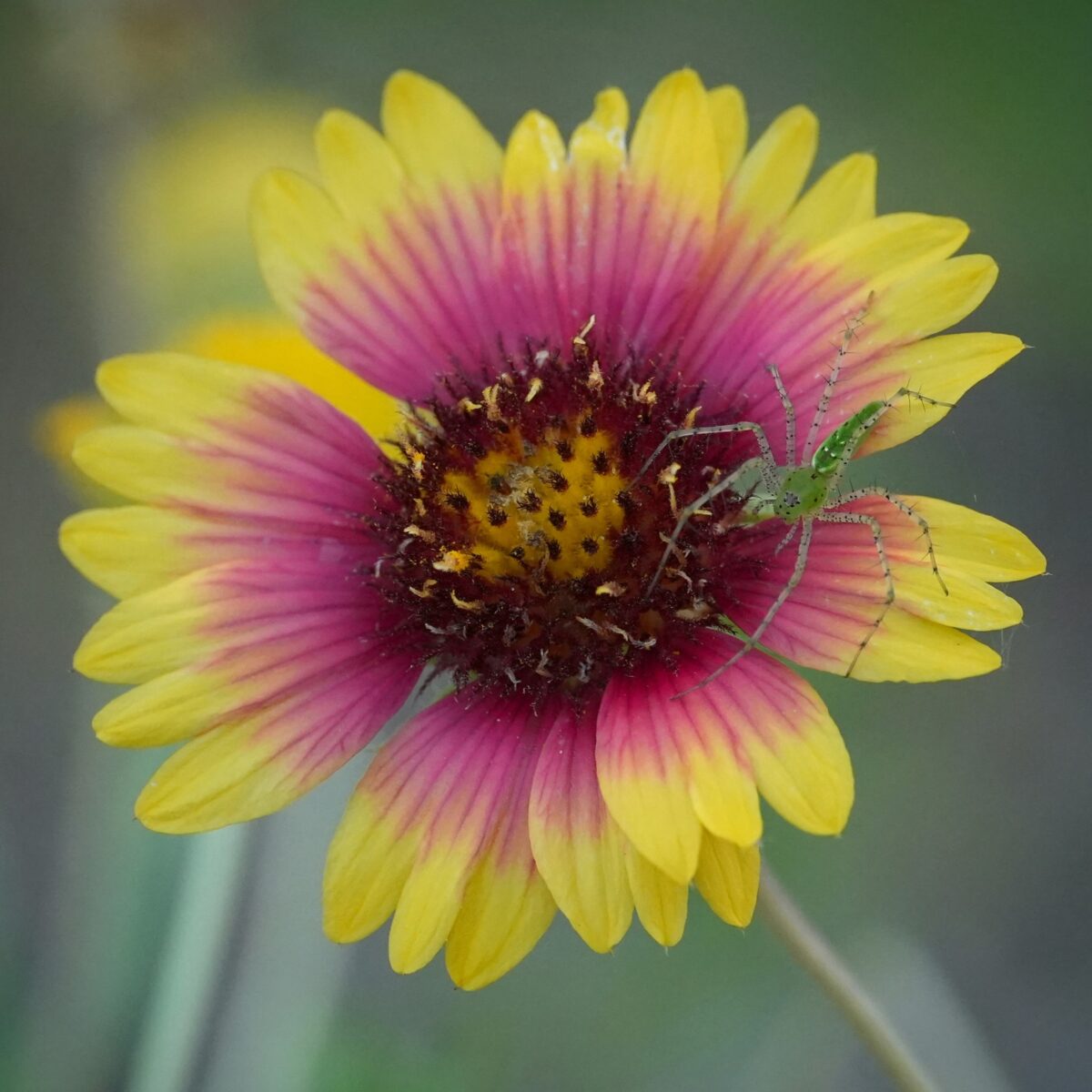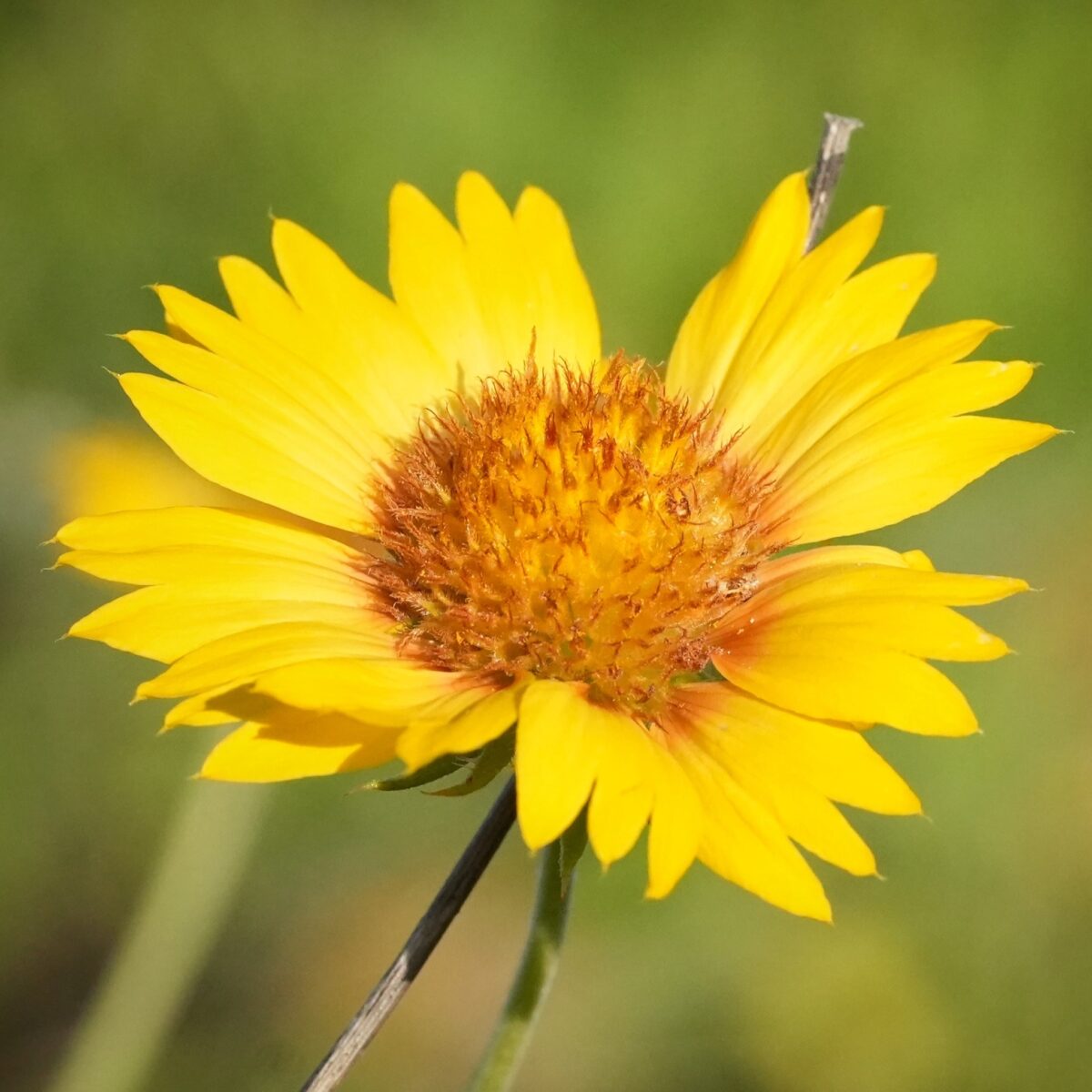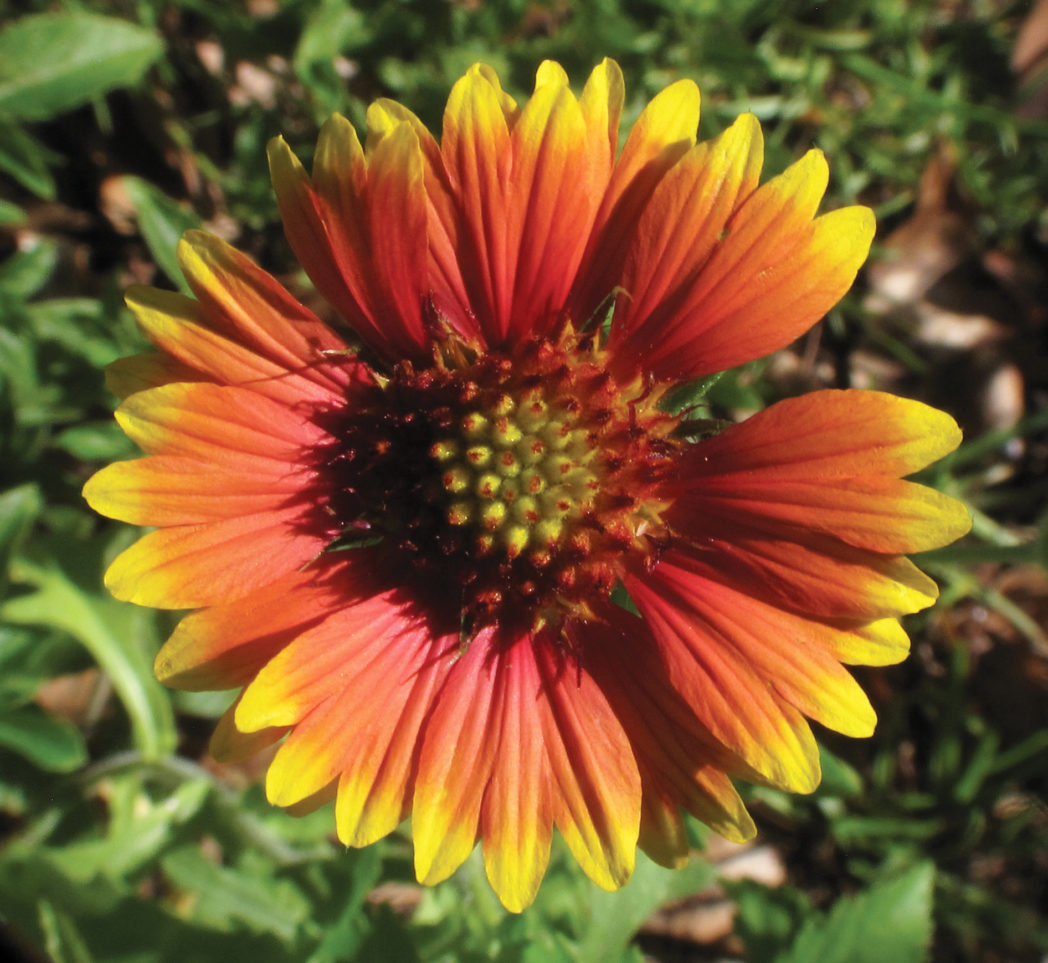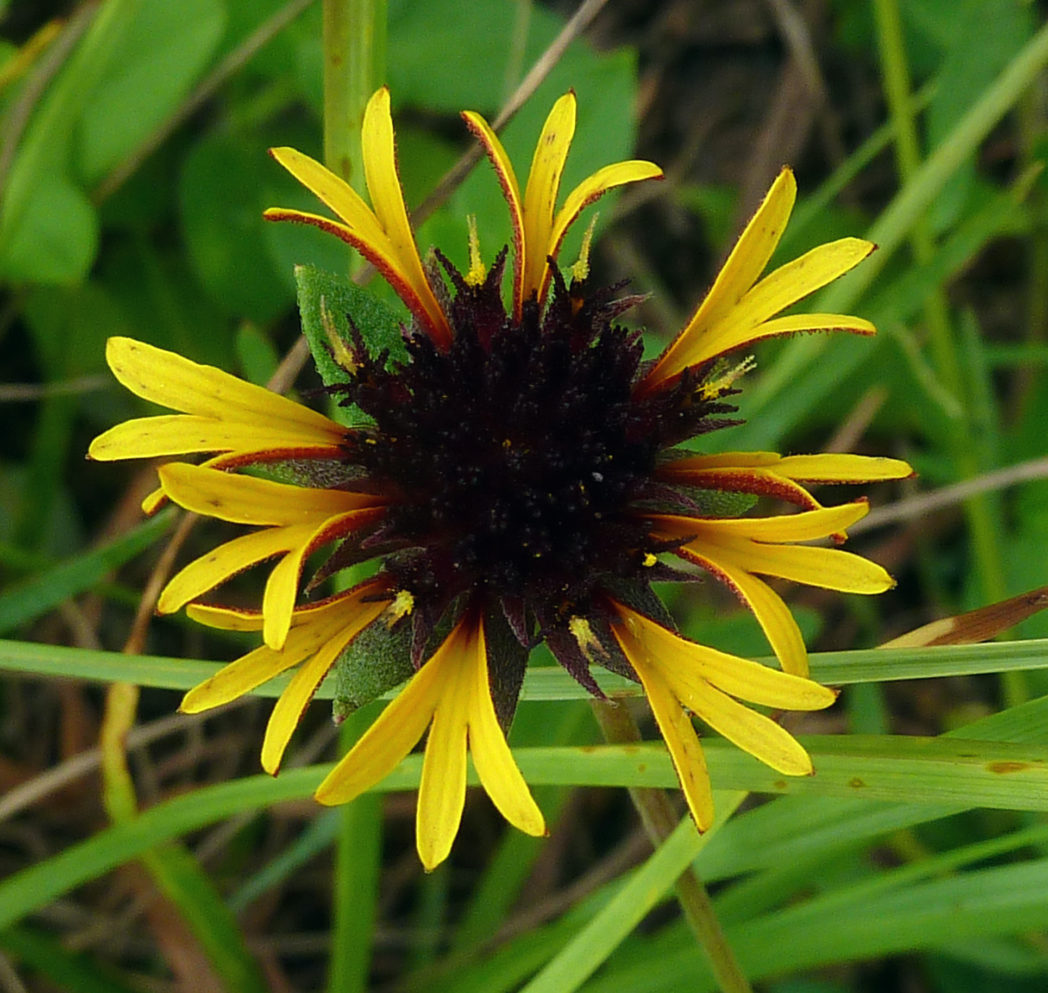Blanketflower
Pictured above: Blanketflower (Gaillardia pulchella) by Emily Bell. Click on terms for botanical definitions. View post as a PDF.
NOTE: In 2020, studies concluded that Gaillardia pulchella is not native to the Eastern US, including Florida. For an overview of this research and the history of this species in Florida read Blanketflower – native or not?
Also known as Indian blanket or Firewheel, Blanketflower (Gaillardia pulchella) occurs throughout Florida in dry savannahs, coastal dunes and other dry, open areas. It blooms in spring, summer and into fall in North Florida, and year-round in Central and South Florida. Its colorful blooms attract a variety of pollinating insects.
Blanketflower’s ray florets are typically bicolored with an inner red band surrounded by an outer yellow band. However, flowers can also be entirely red or yellow, have an inner band surrounded by a white band, or, on rare occasion, be entirely white or yellow. Rarely, ray florets may be tubular — narrow at the base and flaring out like trumpets. The flower’s center disk florets are dark red to purplish. Leaves are linear to lanceolate, deeply lobed and pubescent, which makes the plant appear grayish-green. Leaves are alternately arranged.
Family: Asteraceae (Aster, daisy or composite family)
Native range: Scattered throughout Florida in 27 counties but favoring east coast
To see where natural populations of Blanketflower have been vouchered, visit www.florida.plantatlas.usf.edu.
Lifespan: Annual to short-lived perennial
Soil: Dry to slightly dry, well-drained sandy soils
Exposure: Full sun
Growth habit: 12–18″ tall; can easily spread to twice that width
Propagation: Seed
Florida regions of landscape suitability: North, Central, South
Garden tips: Blanketflower’s brightly colored flowers, long blooming season and drought tolerance make this a popular garden plant. It is relatively pest and disease free, and does well in difficult conditions such as coastal landscapes, roadsides and parking lots. Use it where it can be allowed to spread, as it can be a very aggressive self-seeder.
Caution: Varieties sold at many large retail outlets and garden centers, and by national wildflower seed companies, are usually nonnative G. aristata or varieties of G. pulchella or Gaillardia x grandiflora (a hybrid of G. pulchella and G. aristata).
Blanketflower is often available at nurseries that specialize in native plants. Visit PlantRealFlorida.org to find a native nursery on your area. Seeds are also available through the Florida Wildflowers Growers Cooperative.
Learn more about Blanketflower from the Florida Native Plant Society and the Institute for Regional Conservation.
For more information on other Gaillardia species, see these resources:

